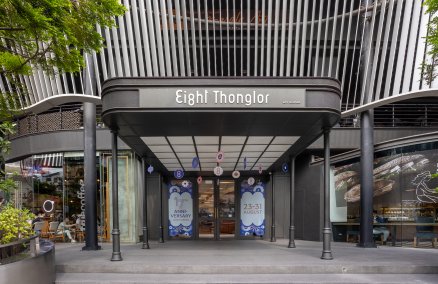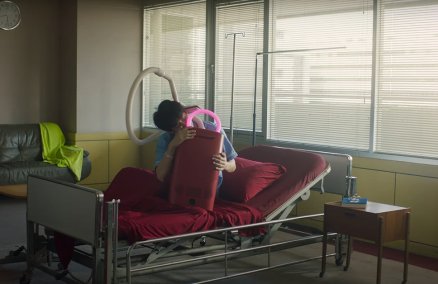The Controversy

For almost two years, the Chao Phraya River Promenade project, which will see a 14-kilometer (seven kilometers on each side) stretch of the river turned into a cycle lane and public walkway, has been headline news for all the wrong reasons. The drama came to a head last month when Chao Phraya for All (CPA), the design and environmental assessment team led by King Mongkut's Institute of Technology Ladkrabang (KMITL) and Khon Kaen University (KKU), released its new plans for the river promenade including the Wiman Phra Indra museum. The conical building bore an uncanny likeness to world-famous British architects Foster + Partners’ design for Moscow’s Crystal Island—a point made publically clear on Facebook by local architect Duangrit Bunnag. The Bangkok Metropolitan Administration (BMA), who commissioned CPA, dug its heals in, insisting the design was original despite the glaring similarities. Eventually the design was dropped, though no action will be taken against the CPA for alleged plagiarism. On the contrary, they were kept on board and submitted their final Chao Phraya Promenade design on Sep 26. Exactly what these plans look like has never been made public, but the BMA still plans to move ahead with them as early as the beginning of 2017. Read on for the many different perspectives on the development.
The Government Official
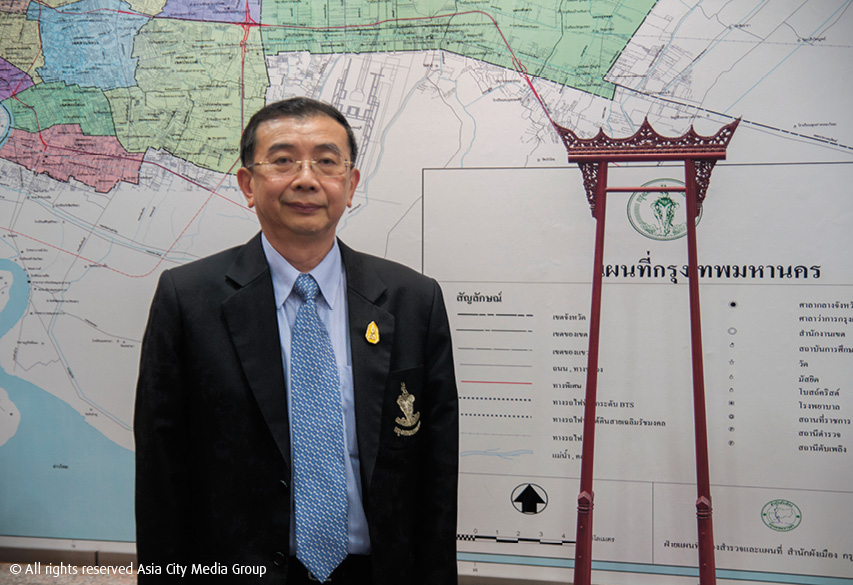
Pirapong Saicheua has been personally responsible for overseeing the riverside project as the BMA's Permanent Secretary. Despite the CPA design’s glaring similarities to Foster + Partners’ work, he still insists it was entirely original.
"The Chao Phraya Landmark was our idea, to place valuable information studied during the design process in a new museum. The drama about the copycat design [Norman Foster's Crystal Island in Russia] and the monument modeled after the head of a naga [a mythical serpent-like animal from Buddhist folklore] is just too much. Who owns the naga copyright? Anyway, we’ve already scrapped that landmark plan. Now we’re waiting for approval from the committee to build the promenade."
The Study Team

Antika Sawasri is assistant manager and spokesperson for the CPA. She was involved both with the design work and controversial seven-month environmental assessment.
"We accepted this project because we saw the benefit of a publicly accessible river promenade. Sure, there will be some effects. Some communities will be relocated as they intrude on the river. We might have been working within a short time frame, but we have a large team which covered everything: water engineers, historians and architects. Our study found out that the promenade won’t affect people that much. You can’t view the Chao Phraya romantically anymore. People don’t wake up and take a bath or paddle their boat in the river these days. We should have more contemporary ways for people to use the Chao Phraya. But there is genuine historical value to a community, like Mittakham 1, then the public should be able to admire it."
The Opposition

Founder of Shma design
Yossapol Boonsom is an architect and key member of
Friends of the River, who are at the forefront of the opposition against the river promenade.
"This project is not created from a macro picture of what the Chao Phraya really needs. The prime minister said he wanted a bike lane and no one dared to ask him why. These are our taxes. If a study was set up transparently and conducted in a proper time frame, after which people said, ‘Yes, we want a promenade, but just one kilometer,’ then OK, let’s build it. But this conversation never happened. KMITL just followed TOR order to study and design a river promenade then forced people to accept it. The government is using top-down policy to reorder the riverbanks to look the same as other countries. The Chao Phraya for All’s designs might be gorgeous, but it’s clear they don’t at all look like the Chao Phraya. It will destroy the river, making it look like somewhere completely different."
The Historian

Reputed anthropology and historian Srisak Valipodom sat on the 19-member National Reform Council in 2010. The editor of Muang Boran Journal, he also lectures frequently on Thai history.
"This promenade has nothing related to Bangkok’s history. The capital was built by communities along the river. The project will destroy the sacred cultural landscape, where temples are the center of faith. They want to erase the communities and turn the Chao Phraya into an irrigation canal. Even their Wiman Phra Indra, the landmark slated to become the Bangkok History Museum, is totally ridiculous. It uses a naga as an icon, but the river has no historical relation to the naga, unlike the Mekong River. Actually, the animal which is historically important to the Chao Phraya is the crocodile, which used to live in the Chao Phraya in ancient times."
The Humanitarian
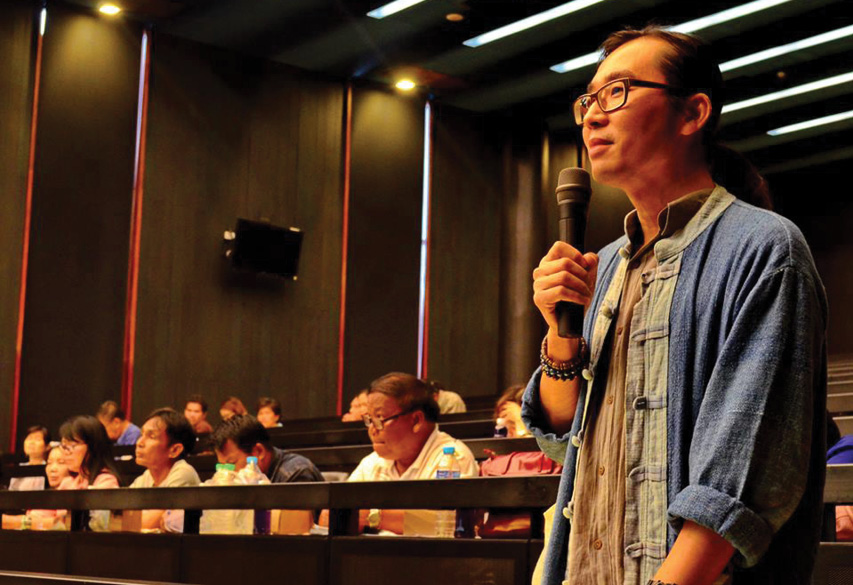
Somnuek Jongmeewasin is one of the key people responsible for reviewing the CPA’s study. He works for the Community Rights and Natural Resources Sub-Commission under the National Human Rights Commission of Thailand (NHRC Thailand).
"The government has claimed it will reorder and limit intrusions on the river, which means some communities will get relocated, even old communities that have lived here for generations. Unfortunately they don’t have any documents proving their age. The new 2016 constitution can’t even protect them because it includes a clause that allows the government to decide whatever it wants. Many of these communities don’t know their rights and decide to move out when they’re offered compensation or get help finding new homes within government housing projects. The promenade also violates the rights of people who legally live on the riverbank. The construction may make them feel unsafe, as it puts a passageway in front of their homes."
Riverside Voices

Suthathip Wongwickij, 62, Samphraya community
"I totally agree with the promenade project. It will bring development to our community through easier access. I want to be able to ride a bicycle around here. It will also allow people to get close to the river for free without having to pay for fancy boat rides. I’m not worried about privacy or security, we can protect ourselves. Anyway, the people can’t win against a government decision. If something’s good for the country and doesn’t obscure the river view then why wouldn’t we want it?"
Udom Khamging, 67, Mittrakham 1 community
"I’m afraid that this project will expel us from our home. I have stayed here for 50 years. It was a giant floating market before it became a settlement. I’ve dived in the Chao Phraya River all my life to find antiques and sell them to feed my wife and disabled son. I’m 67 and only graduated fourth grade. I don’t know how I would make a living if I had to move away from here."
Where did the Chao Phraya Promenade come from?
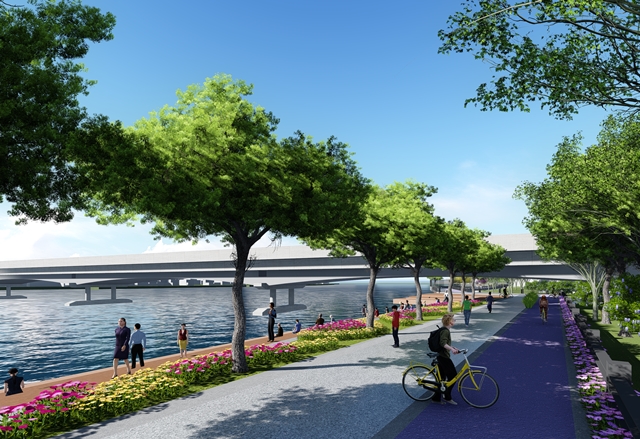
The original idea for the Chao Phraya Promenade stems from the current military government led by Prime Minister Prayuth Chan-Osha. He is said to have personally initiated the proposal after coming to power in May 2014. In Dec 2014, the cabinet accepted a plan for a 2.5-meter-high, 19.5-meter-wide passageway that included a bike lane. The development would span from Rama VII Bridge to Phra Pinklao Bridge, a total of 14 kilometers (seven kilometers on each side). On May 12, 2015, the cabinet voted to build the Chao Phraya river promenade in 18 months, starting Jan 2016. Following strong public outcry, the process was delayed, with no private sector contractors submitting their bid. To ease public concern, the BMA hired KMITL and KKU in Jan 2016 at a cost of B120 million to study and design the river promenade in seven months under the project name Chao Phraya for All. Now, that study is complete, and being reviewed by commissions from all related departments, including the Interior Ministry, Marine Department, Bureau of Budget, Office of the Council of State, Office of the National Economics and Social Development Board, as well as the BMA.
Chao Phraya River Rim
Click map to enlarge
The proposed 14-kilometer promenade might already be controversial, but according to the Office of Transport and Traffic Policy and Planning (OTP), they have an even larger project planned. The Chao Phraya River Rim (
www.chaoprayariverrim.com) will be a 140-kilometer passageway along the river bank, passing Pathum Thani, Nonthaburi and Bangkok before ending at Bang Krachao in Samut Prakarn province. The five-year plan is broken into eight projects. Scheduled for 2016-2060.
P 1: Pathum Thani: Pathum Thani Bridge - Nonthaburi Bridge
B2.466 billion
P 2: Bangtanai: Nonthaburi Bridge to Rama IV Bridge
B1.425 billion
P 3: Pak Kret: Rama IV Bridge to Royal Irrigation Department Office
B2.066 billion
P 4: Phra Nang Klao Bridge: Royal Irrigation Department Office to Maha Chesadabodindranusorn Bridge
B2.626 billion
P 5: Nonthaburi Pier: Maha Chesadabodindranusorn Bridge to Rama V Bridge
B5.129 billion
P 6: Bang Phai: Rama V Bridge to Rama VI Bridge
B1.926 billion
P 7: Bangkok: Rama VI Bridge to Ratburana
B18.108 billion
P 8: Bang Krachao
B2.089 billion
Those opposed to the Chao Phraya River Promenade can lend their voice to a Change.org petition at chn.ge/1tlD153




















